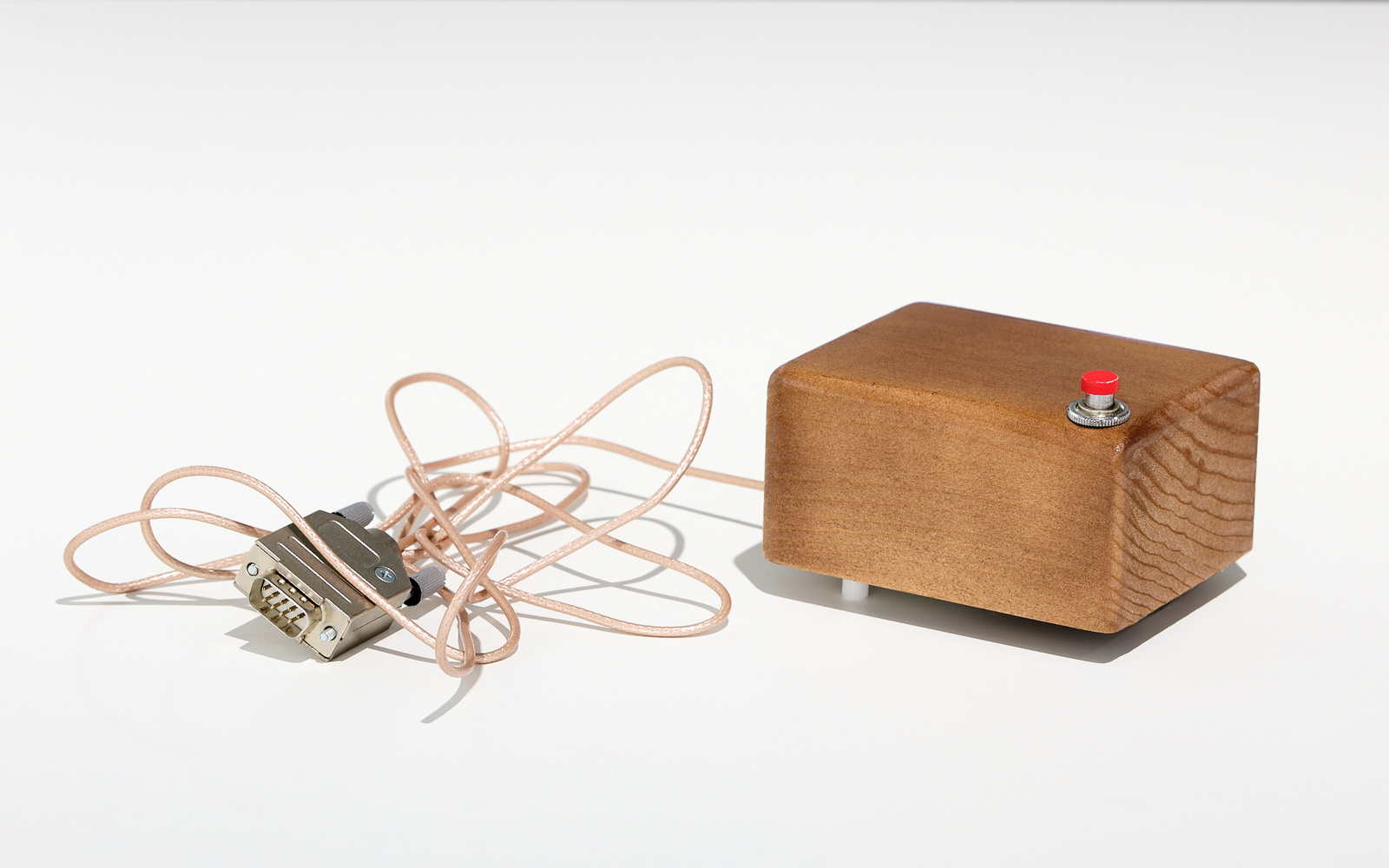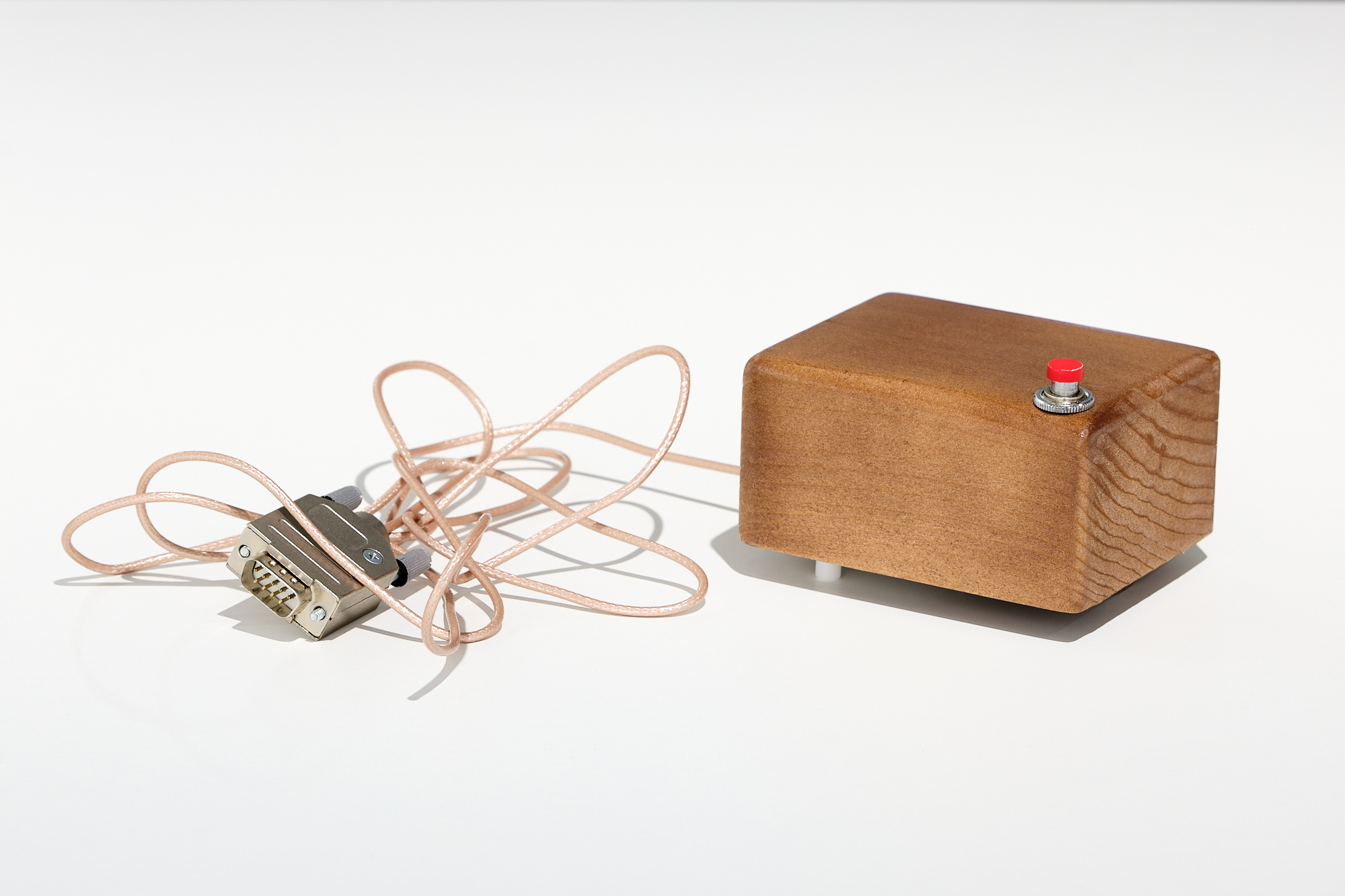Mouse
1964
- Title
- Mouse
- Year
- 1964
- Medium / Material / Technic
- Circuit board, metal wheels, wooden case
Alongside the keyboard, the computer mouse has become a crucial human-machine-interface. It was invented in the early 1960s.
In 1964, computer scientist Douglas C. Engelbart developed the input device at the Stanford Research Institute. His mouse features two wheels to determine its X/Y coordinates and a single button for clicking. The invention was necessitated by a new display system, which required a tool that would facilitate the interaction between human and machine. Computer engineer Bill English constructed the first prototype based on Engelbart’s plans.
In 1970, the invention was patented as “X/Y Position Indicator for a Display System.” English himself called the device “Computer-Aided Display Control” in 1965. The term “mouse” ultimately prevailed, evoking the device’s shape and swiftness of use.
However, it would take several years for the now omnipresent tool to become commercially viable. The engineer and watchmaker André Guignard designed and implemented the first modern computer mouse together with computer scientist Jean-Daniel Nicoud in 1977. It uses scanning technology based on optical encoders in combination with mechanical rollers. Beginning in 1982, Logitech would sell this design under the name “P4.”
The two designs enabled the paradigm shift towards intuitive, gestural interaction with computers and helped make the digital universal machine suitable for everyday use.
Original: Stanford Research Institute, Menlo Park, USA
Replica: Heinrich Nixdorf MuseumsForum Paderborn, 2019
Courtesy HNF Heinz Nixdorf MuseumsForum, Paderborn

